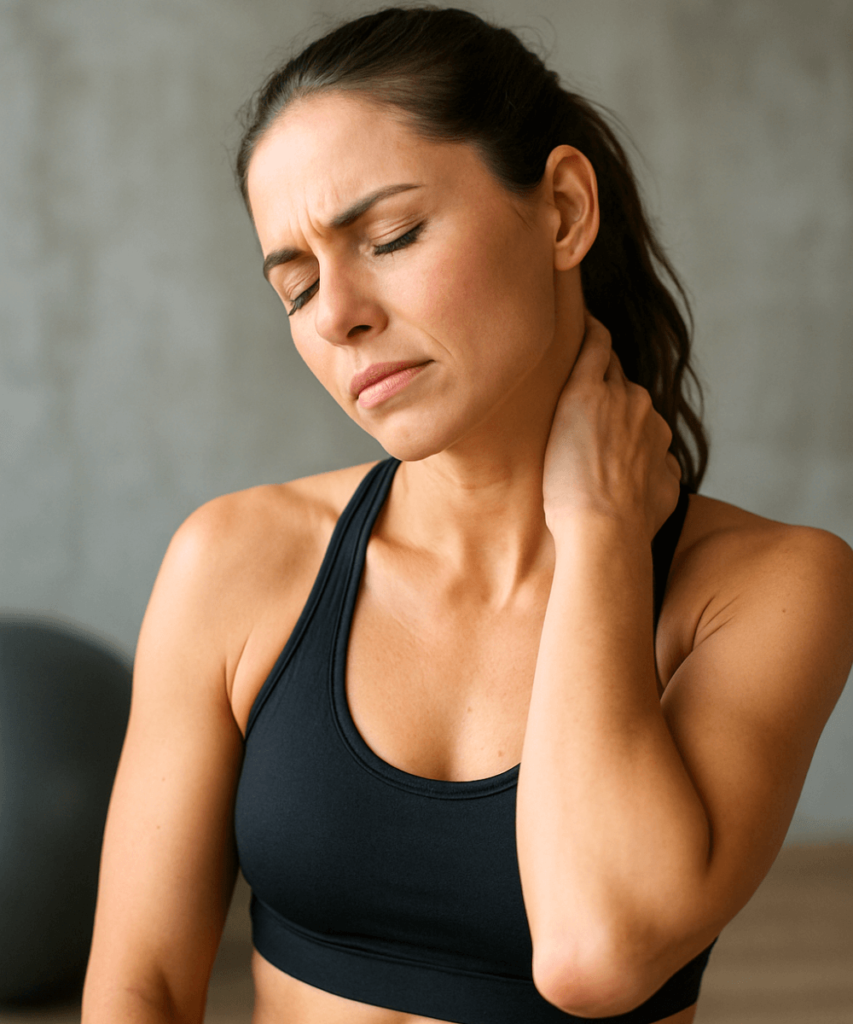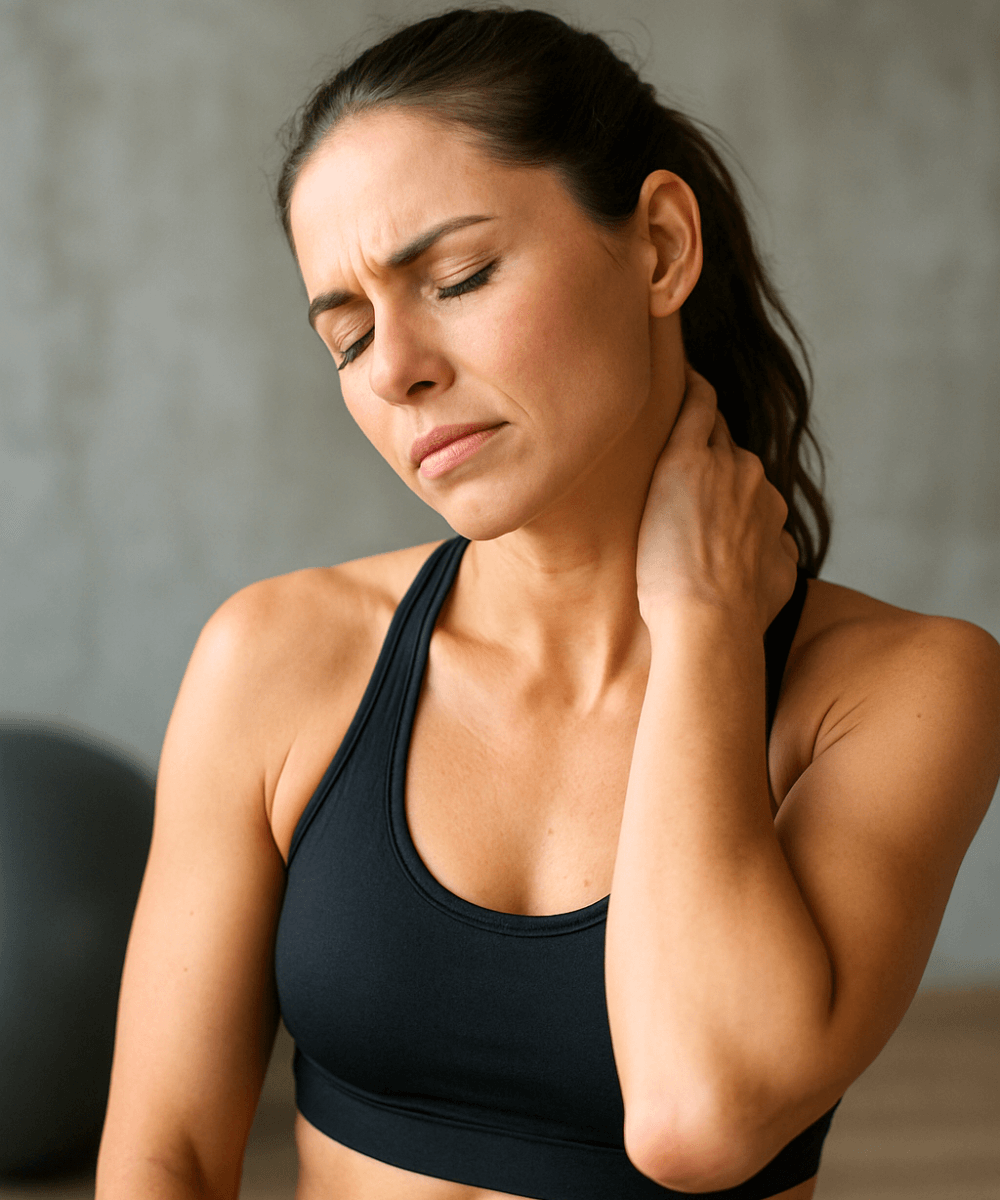How to Relieve Neck Pain After a Workout. “Experiencing neck pain after a workout? Learn the causes, remedies, and preventive tips to relieve neck pain quickly and safely. Includes expert advice and natural remedies.”
Working out is an excellent way to stay fit and healthy, but sometimes you may experience unexpected aches—especially in sensitive areas like your neck. Neck pain after a workout can be caused by poor posture, incorrect form, muscle overuse, or even stress. Fortunately, there are several ways to manage and relieve neck pain safely.
In this comprehensive guide, we’ll explore why neck pain occurs after a workout, how to relieve neck pain effectively, and what you can do to prevent it in the future.

🧠 Why Do You Get Neck Pain After a Workout?
Neck pain after exercising is often linked to muscle strain or poor form during exercises. Here are some common causes:
1. Poor Posture
If you’re not keeping your spine neutral while lifting weights or doing bodyweight exercises, the neck muscles may be under unnecessary strain.
2. Tight Traps or Shoulders
Tight trapezius muscles or shoulder tension can radiate pain into the neck, especially during upper-body workouts.
3. Looking Up or Down Too Much
During sit-ups, planks, or push-ups, looking at the ceiling or tucking your chin too tightly can overextend or compress the neck muscles.
4. Lack of Warm-Up or Cool-Down
Skipping stretches or warm-ups can leave your muscles stiff and more prone to injury.
✅ How to Relieve Neck Pain After a Workout
If you’re currently dealing with post-workout neck pain, here are proven, effective ways to find relief:
1. Apply Ice or Heat
- Ice: Use an ice pack for the first 24–48 hours to reduce inflammation. Wrap the ice in a towel and apply for 15–20 minutes.
- Heat: After the inflammation subsides, use a heating pad to soothe tight muscles and improve blood circulation.
🔍 Tip: Don’t apply ice or heat directly to the skin. Use a barrier like a cloth or towel.
2. Gentle Stretching Exercises
Stretching your neck can ease tightness and improve mobility. Try these:
Neck Tilt:
- Sit or stand tall.
- Slowly tilt your head toward your right shoulder.
- Hold for 10–15 seconds, then repeat on the left side.
Chin Tucks:
- Sit straight and gently draw your chin inward (like making a double chin).
- Hold for 5 seconds and release.
- Repeat 10 times.
Shoulder Rolls:
- Roll shoulders backward and forward in a circular motion.
- Repeat 10 times each direction.
3. Massage Therapy
A gentle self-massage or a session with a licensed massage therapist can release muscle tension and trigger points around your neck and shoulders.
💡 Use essential oils like lavender or eucalyptus with a carrier oil for added relaxation benefits.
4. Correct Your Posture
Poor posture during workouts is one of the biggest culprits for neck pain. Focus on:
- Neutral spine alignment when lifting weights.
- Relaxing your shoulders—don’t shrug during exercises like rows or shoulder presses.
- Avoiding “text neck” after workouts—don’t look down at your phone for long periods.
5. Over-the-Counter Pain Relief
For moderate pain, OTC medications like ibuprofen or acetaminophen can help reduce inflammation and manage discomfort. Use only as directed and consult a doctor if pain persists.
6. Foam Rolling and Trigger Point Release
Use a foam roller or massage ball to target tight upper back and shoulder areas that might be pulling on your neck muscles. Focus on:
- Upper traps
- Rhomboids
- Upper spine (thoracic area)
⚠️ Avoid rolling directly on the neck—stick to surrounding muscle groups.
7. Hydration and Nutrition
Muscle cramps and soreness can be worse when you’re dehydrated or low in key nutrients like magnesium and potassium. Drink water post-workout and consider foods like:
- Bananas
- Leafy greens
- Nuts and seeds
- Avocados
8. Rest and Recovery
If the pain is persistent, take a break from intense workouts for a few days. Overtraining can lead to chronic tension in the neck and shoulders. Focus on:
- Sleep (7–9 hours per night)
- Gentle yoga or walking
- Breathing exercises to reduce tension
🛡️ How to Prevent Neck Pain in the Future
Preventing neck pain is just as important as treating it. Here are key preventive tips:
✅ Warm Up Before Exercise
Start with 5–10 minutes of light cardio and dynamic stretching to prepare your muscles.
✅ Strengthen Neck and Shoulder Muscles
Incorporate exercises like:
- Scapular retractions
- Face pulls
- Resistance band neck extensions
✅ Use Proper Workout Form
Hire a personal trainer or use a mirror to check your form when doing strength training. Be especially mindful during:
- Planks
- Crunches
- Overhead presses
✅ Adjust Screen Time Habits
Your posture outside the gym also matters. Take regular breaks from screens and use ergonomic setups.
✅ Don’t Ignore Small Aches
Minor tension can quickly turn into chronic pain if not addressed early. Listen to your body and rest when needed.
🚨 When to See a Doctor
Most post-workout neck pain is mild and resolves in a few days. But consult a healthcare professional if:
- Pain lasts more than 7 days
- There’s numbness, tingling, or weakness
- Pain radiates down the arm
- You experience headaches or dizziness
🌿 Natural Remedies for Neck Pain
If you prefer holistic options, consider:
- Turmeric supplements – anti-inflammatory properties
- Magnesium oil spray – promotes muscle relaxation
- CBD balm or cream – supports pain relief and muscle recovery
- Chamomile tea – reduces stress and tension
📋 Summary: Key Takeaways
| Tip | Action |
|---|---|
| Stretch | Neck tilts, chin tucks, and shoulder rolls |
| Ice/Heat | 15–20 mins depending on pain stage |
| Massage | Self-massage or professional therapy |
| Posture | Maintain neutral spine during and after workouts |
| Hydrate | Drink water and replenish nutrients |
| Strengthen | Build neck and upper back muscle |
| Rest | Allow muscles time to heal |
📣 Final Thoughts
Dealing with neck pain after a workout doesn’t mean you have to stop exercising altogether. With the right recovery strategies, posture awareness, and preventive care, you can stay pain-free and continue to enjoy your fitness journey.
Stay mindful, listen to your body, and don’t hesitate to consult a professional if needed. Your neck supports your most vital connection—your brain and spine—so take care of it!

